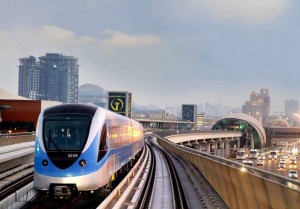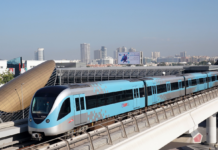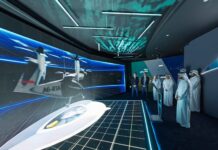By Alison McMeans www.thenational.ae
DUBAI // The Metro will be free for disabled passengers by February.

Details are still being ironed out, but Roads and Transport Authority officials said yesterday that the system would be similar to the one that allows people with special needs to use the Salik toll system for free.
“Who it will cover, I don’t know, but there will be an agreement,” said Abdul al Hassan, the planning and development director for the rail line.
“There are special blue cards for people with disabilities with personal information which will work with the system,” he said at the Rehabilitation International conference, a gathering of experts, professionals and advocates for the disabled.
Mr al Hassan, who said the Ministry of Social Affairs was also involved in the project, told the group that the Metro was designed to accommodate all passengers.
“A barrier-free design is in all Metro stations so they can be effectively used by passengers with special needs,” he said. “Our vision is safe and smooth transport for all, which means that everyone should have easy access to the Metro.”
Among the rail line’s features for the disabled:
– There are 500 metres of pedestrian-only access at the entrance to each station, and signs directing people with special needs.
– The lifts are designed so that a person in a wheelchair can get in and out of them easily. The oversized buttons are brightly coloured to help people with impaired sight.
– There are lowered ticket counters to accommodate people in wheelchairs, and the gates are large enough to allow a person in a wheelchair to pass through easily.
– On the station floors, there are textured tiles designed to guide blind people onto platforms.
– There is space for one wheelchair in each carriage, with emergency buttons within reach of someone in a seated position.
– And there are trained personnel at each station to help people with disabilities.
Some experts, however, questioned whether the Metro had done enough.
“They could do a lot more for the visually impaired,” said Joseph Kwan of the International Commission on Technology and Accessibility.
“We went with some visually impaired friends and the buttons on the lift should have Braille on them or tactile letters. One station had them but it was inconsistent.”
He also said ticket counters should be designed so people with hearing aids could hear the staff behind the glass.
“The new design is fairly good,” he said.
“It is a brand-new system, which means they can purchase the latest technology and designs. But there are still some improvements that could be done.”



















